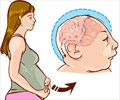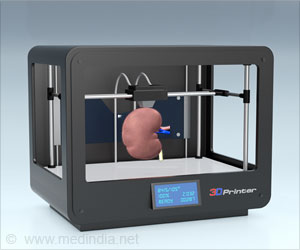- Advancement in 3-D printing technology gives huge boost in the care and management of congenital heart disease (CHD).
- Congenital heart disease refers to heart defects present at birth. These affect the quality of life, with impaired growth and development of the child and may necessitate frequent hospitalizations.
3-D Technology in Cardiology – Transforming Care of Congenital Heart Disease
The application of 3-D printing in healthcare has been a relatively recent phenomenon, with major advances in cardiology seen only in the past decade.According to Anwar, "3-D printing is rapidly evolving in medicine, with technical improvements in printers and software fueling new and exciting applications in patient care, innovation and research."
3-D printing in cardiology involves obtaining a 3-D model, which is the exact replica of the patient’s heart with associated defect. The many ways in 3-D models could influence care of CHD include the following:
- These models can be employed for precise planning and simulation prior to surgery. This could potentially reduce complications, as well as, decrease time spent in the operating theater.
- 3-D printing could prove to be a game changer in the education and training of physicians.
- The 3-D model approach will augment traditional mentor based training by precise simulation of the complex structural and functional defects in CHD.
- Cardiac trainees and residents will have the opportunity of enhanced learning experience in three main areas namely having high-fidelity simulation experiences, better understanding of complex anatomical and functional alterations, as well as exposure to rare cases.
- Even experienced cardiologists can use these models for lifelong learnings, maintain their certification, and also practice before tough and complex cases.
- 3-D models can be used between the various specialists to discuss pathology, plan the surgery, discuss possible outcomes and plan peri-operative care in order to achieve the best patient outcome.
- Last but not the least, models will help the medical team to give patients and their caregivers with an improved understanding of the disease process, risks versus benefits of various treatment options and the alternatives.
About Congenital Heart Disease
CHD refers to structural defects of the heart present at birth and account for the most common type of birth defect. The severity of the defect may vary from simple to complex. The treatment of CHD depends on the type and severity of heart disease. Most cases are treated by surgery and cardiac catheterization procedures and survival rates have improved drastically. However, some patients require frequent monitoring and specialized care throughout their lives.Future of 3-D Printing
- The team believe that future advances in 3-D printing, will likely be helped by better printer technology and printing materials.
- Tissue mimicking materials, that would aid creation of more life-like models and replicate closely the patient’s unique anatomy and physiology, are being developed.
- The more realistic the models become, the easier it would become to use them to study disease process, plan better treatment options and bring about the most optimal patient and all round outcome.
- Finally, though still in its nascent stage, it may one day be possible to print living tissues.
What is 3-D Printing Technology?
Simply stated, 3-D printing is the process of creating a physical object from a virtual model. The process is similar to the ink-and-paper printers, which we all are familiar with, but instead of traditional ink, 3-D printers squeeze out a various types filaments and print one layer after another until the virtual model is printed as a physical form.Thus, 3-D printing technology is also referred to as additive manufacturing. "Additive" means successively adding of thin layers between 16 to 180 microns or more to create the final physical object.
There are several techniques of 3-D printing. The technique used will depend on the materials used for printing.
While this technology can be path breaking, more wider adoption is currently limited by the high costs of modeling and printing.
References:
- Shafkat Anwar, Gautam K. Singh, Jacob Miller, Monica Sharma, Peter Manning, Joseph J. Billadello, Pirooz Eghtesady and Pamela K. Woodard "3D Printing is a Transformative Technology in Congenital Heart Disease" (2018) DOI: 10.1016/j.jacbts.2017.10.003
Source-Medindia
















